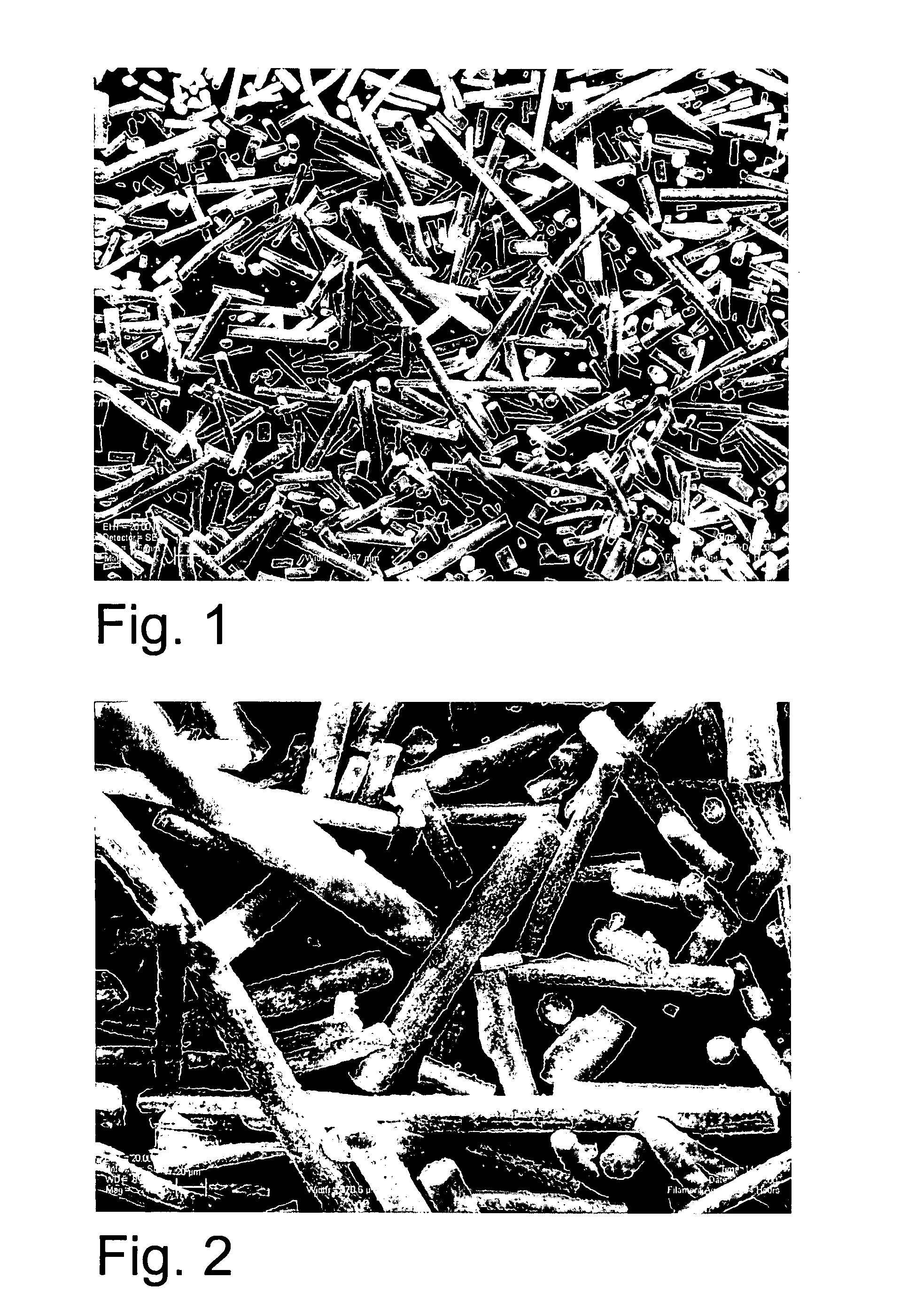Bone cement having porous fiber reinforcement
- Summary
- Abstract
- Description
- Claims
- Application Information
AI Technical Summary
Benefits of technology
Problems solved by technology
Method used
Image
Examples
Embodiment Construction
[0018]An embodiment of the bone cement matrix of the present invention consists of three base component parts, which when mixed form a radiopaque rapidly setting bone cement, namely, a powdered or granular low viscosity polymer component; a liquid reactive or polymerizable monomer component; and a reinforcement component consisting of porous ceramic fibers.
[0019]The polymer and monomer components of the bone cement matrix of this invention can be based on the acrylic, e.g., (meth)acrylate system of compounds, however, other polymeric compounds may at times be used. In reference to this invention, the terms “(meth)acrylate” and “poly(meth)acrylate” include the monomers and polymers, respectively, of methacrylic acid esters and acrylic acid ethers, and the polymers also include the co-polymers of the same. Generally, the polymer component of the composition can be any methyl(meth)acrylate polymer such as methyl(meth)acrylate homopolymers and copolymers of methyl(meth)acrylate with alp...
PUM
 Login to View More
Login to View More Abstract
Description
Claims
Application Information
 Login to View More
Login to View More - R&D
- Intellectual Property
- Life Sciences
- Materials
- Tech Scout
- Unparalleled Data Quality
- Higher Quality Content
- 60% Fewer Hallucinations
Browse by: Latest US Patents, China's latest patents, Technical Efficacy Thesaurus, Application Domain, Technology Topic, Popular Technical Reports.
© 2025 PatSnap. All rights reserved.Legal|Privacy policy|Modern Slavery Act Transparency Statement|Sitemap|About US| Contact US: help@patsnap.com



